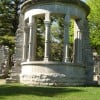Visiting Luxembourg and its Grand Ducal Palace: previously the seat of the government
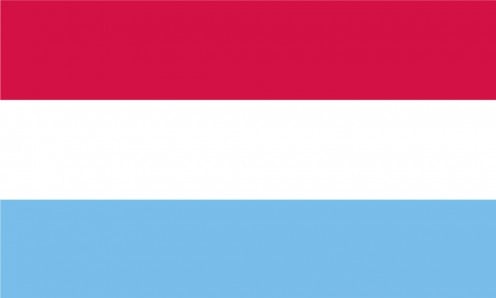
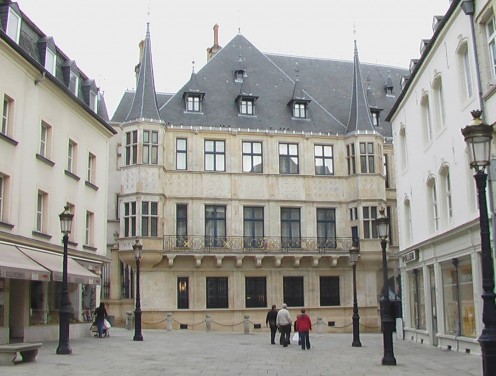
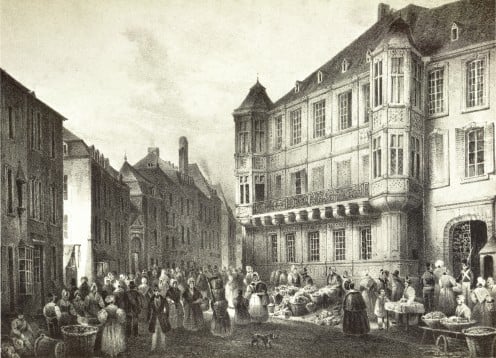
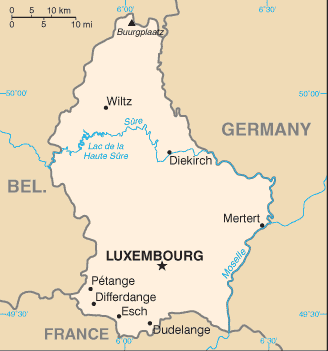
More than meets the eye, but a fine front
This fine building in Flemish Renaissance style has for centuries been at the centre of government in Luxembourg. Visitors may seem to note that it has now changed uses. Today it is the residence of the reigning Grand Duke of Luxembourg. This function dates from 1890. Yes, indeed, but it must be remembered that the monarch of the Grand Duchy of Luxembourg is, at least symbolically, a key player in the functioning of the state. Current Grand Duke Henri has reigned since the year 2000.
Dating from the 16th century, the splendid frontage of the Grand Ducal palace may be recognized in old pictures of the building. I have included an 1834 drawing by Nicolas Ries, in which the lines of the building may be clearly distinguished. At a deeper level, an examination of the history of the Grand Duchy of Luxembourg over the past two centuries may reveal that constitutionally there has been a very great deal of continuity. This continuity may also be said to inform the actual as well as perceived usage of the building formerly known as the Government building (French: Hôtel du gouvernement), but today as the Grand Ducal palace (French: Palais Grand Ducal ).
Occasionally in the history of the Grand Duchy of Luxembourg, in which its reigning Grand Dukes and Duchesses have basically been very popular, there have been times when suspicions have arisen that the monarch has been unwilling to sign legislation. This occurred prior to World War One, when the Grand Duchess Marie-Adélaïde, was slow to sign an education bill (but which she eventually signed). While not having done anything unconstitutional, the Grand Duchess built up a store of resentment among secularist politicians because of this incident. The complication of the occupying German troops in World War One was added to the fact that many soldiers from Luxembourg fought with, and died, in the French army. After the War the politicians found it easier to divest themselves of the reigning monarch but preserve the dynasty. Thus, the somewhat brutal lesson in civics was that the monarch reigns with the approval of the political class, and if he or she is perceived to step out of harmony with them, then his or her days as monarch are numbered.
So: Luxembourg's monarchy as a fine expression of the popular will? as a plausible façade for the convenience of Luxembourg's politicians? as a popular symbol and instrument of rectitude? Beyond the letter of the constitution, such questions are sometimes left undefined with regard to what exactly the monarch's role is, what it should be, and what he or she will actually make of it.
In recent years the role of the reigning Grand Duke has been clarified to the extent that the signing of legislation which Parliament has passed, should be understood as a proroguing of the laws: a necessary, formal step, but which absolves the reigning monarch from any sense of personal responsibility for an 'assent' to laws to which he or she might be personally opposed. This might be described as making it 'easier' for a monarch to fulfill his or her role, but it could also concentrate more influence into the hands of a Prime Minister seeking to exercise a more exclusive role in acting as a guardian of the constitution.
There is in fact a subliminal, if very powerful, reminder that the monarch is compelled to keep in step with the government by the fact that the building of the Chamber of Deputies (French: Chambre des députés), the country's Parliament, is physically situated next door to the Grand Ducal Palace. The student of Luxembourg's affairs is tempted to ask: was this by way of an extension of the neighbouring Hôtel du gouvernement , with the furniture re-arranged? Behind the curtains of the fine façade of the Grand Ducal palace, one thus wonders what the ultimate reality is — but, then, a monarchy stripped of its mystery would no longer be a monarchy.
A number of years ago, Prime Minister Jean-Claude Juncker (also behind the 'proroguing' clarification of the monarch's role) made a very telling public statement: 'I am always on the side of the Grand Duke — wherever this may lead me'. On the surface it sounded as if he would always be in agreement with whatever the Grand Duke wished. At a deeper level it may, rather, have meant that the Prime Minister and the government would always attempt to ensure that they would have a Grand Duke or Duchess who would fulfill the wishes of the political class, which would also purportedly be those of the people of Luxembourg.
There is more than meets the eye to the role of this fine building with its remarkable façade, and more than meets the eye to a constitutional monarchy like the Grand Duchy of Luxembourg.
But, in any case, one would expect this to be so.
Also worth seeing
Near the Place de la Constitution and the Gelle Fra war memorial is Luxembourg's Cathedral and adjacent National Library , which is a former Jesuit college dating from 1603; in the Cathedral's crypt are the bones of Jean the Blind of Luxembourg, killed at the Battle of Crécy in 1346; these remains were removed in 1946 from Saarburg, Germany — where Luxembourg maintained a military occupation after World War 2 — and these were interred again in the crypt. The Pont Adolphe (Adolf Bridge) across the Pétrusse Valley is a major landmark.
Clervaux , Luxembourg (distance: 65 kilometres) has a fine castle, striking ecclesiastical architecture and memories from the Battle of the Bulge.
Trier , Germany (distance: 49 kilometres) is an ancient city with many architectural treasures including the Porta Nigra , which dates from the Roman era.
Nennig , Germany (distance: 23 kilometres) has a Roman villa with a well preserved mosaic.
Waldhof-Falkenstein , Germany (distance: 55 kilometres) has an ancient castle overlooking the Our Valley, on the border of Luxembourg.
Grevenmacher , Luxembourg (distance: 28 kilometres) has a picturesque old chapel which is situated at the top of a long set of steps.
Audun-le-Tiche , France (distance: 22 kilometres) is situated adjacent to the border with Luxembourg, and has a necropolis museum on a site dating from Merovingian times.
Bastogne , Belgium (distance: 71 km), is visited by many Americans because of its Battle of the Bulge associations.
...
How to get there: The nearest large international airport is Luxembourg (Aéroport de Luxembourg ), at Findel, from where car rental is available. For North American travellers making the London, England area their touring base, airlines flying to Luxembourg include Luxair (from London Heathrow Airport and London City Airport) and CityJet (from London City Airport). Please check with the airline or your travel agent for up to date information. Please refer to appropriate consular sources for any special border crossing arrangements which may apply to citizens of certain nationalities.
MJFenn is an independent travel writer based in Ontario, Canada.
Other of my hubpages may also be of interest
- Visiting the Pont Adolphe in Luxembourg City: bridging the essence of the Grand Duchy of Luxembourg'
- Visiting Luxembourg City's 'Place de la Constitution': the 'Gelle Fra' and keeping ahead of the depo
- Visiting Clervaux in the Grand Duchy of Luxembourg: rich architectural heritage and Battle of the Bu
- Visiting Luxembourg's Bivels, on the Our River: shadows, colours and borders blend
- Visiting Cinqfontaines, Luxembourg: remembering World War Two inhumanity in the Grand Duchy
